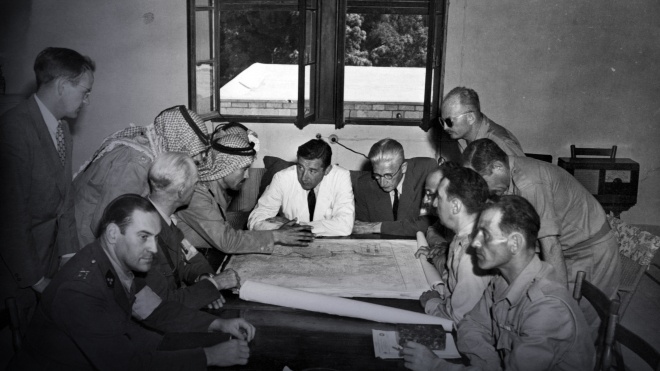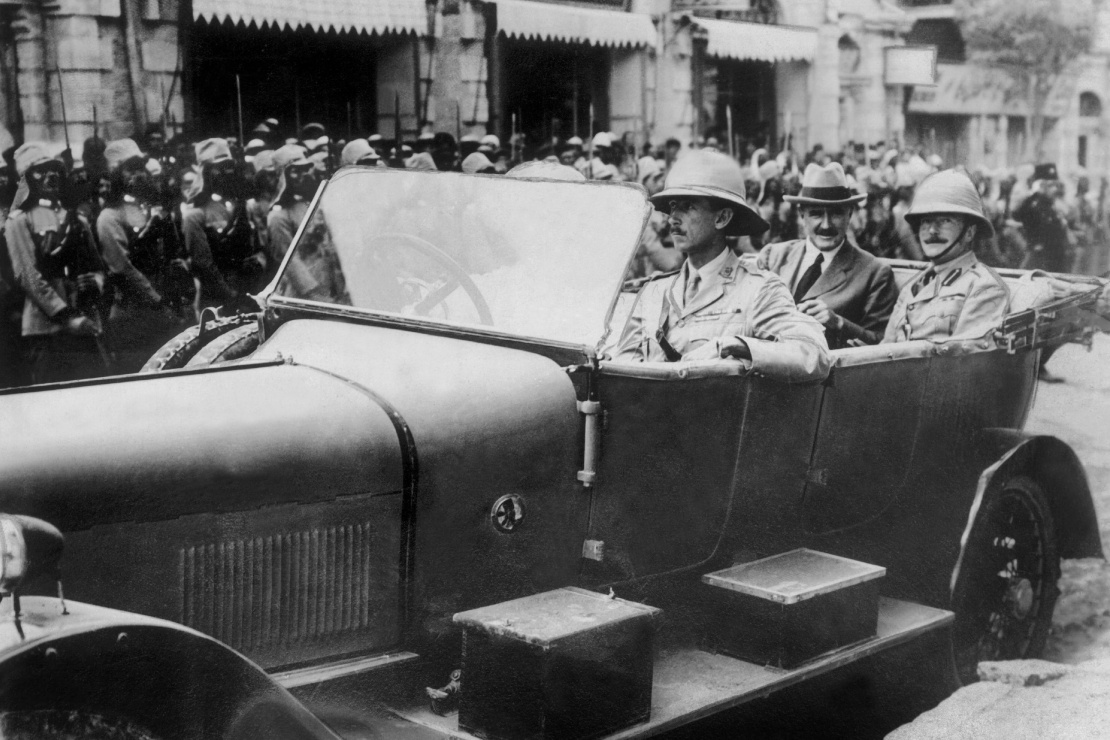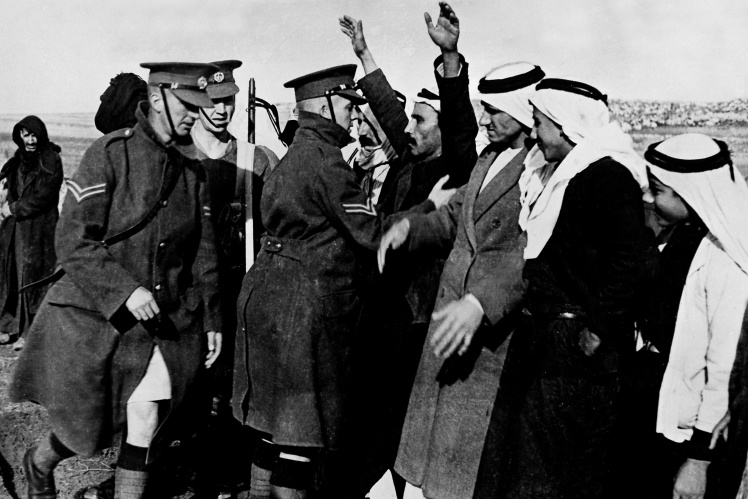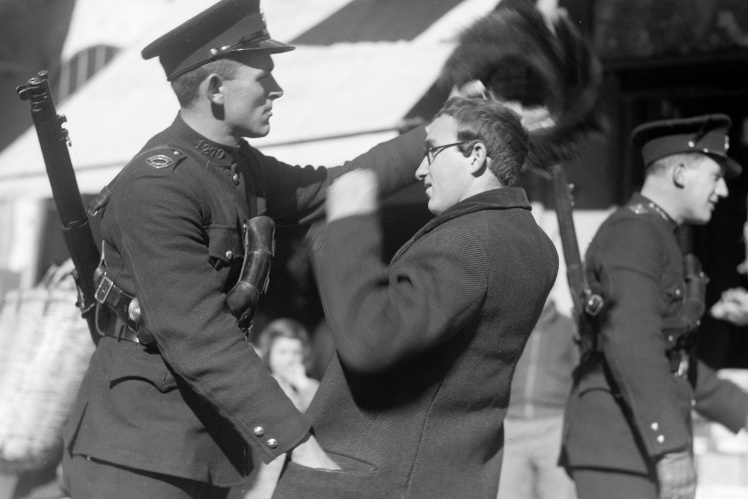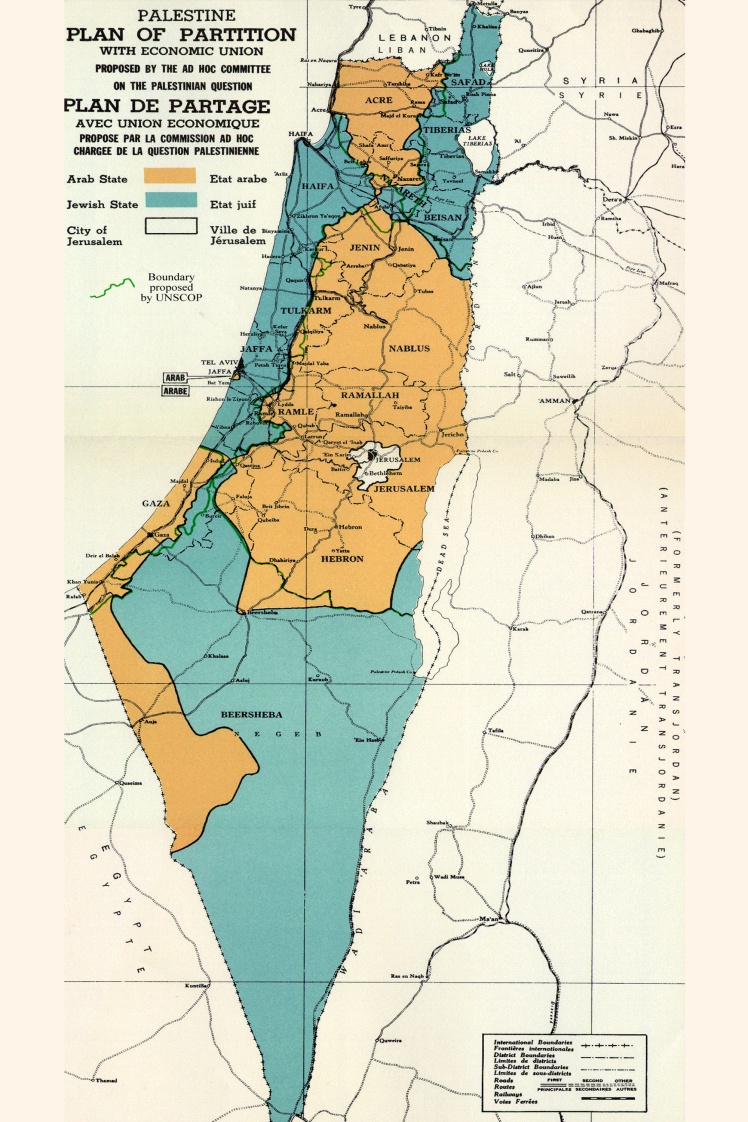Since the 12th century, when systematic persecution of Jews began in Europe, some community leaders had the idea of returning to the Land of Israel and Jerusalem. In the second half of the 19th century, a full-fledged political trend arose — Zionism, which aimed to create an independent Jewish state in the Middle East.
Back in the 11th century BC, the ancient Jewish tribes founded the Kingdom of Judah in Palestine. But at the end of the 19th century, Palestine had been under the rule of the Ottoman Empire for about 400 years, and it was inhabited mainly by Arabs. And, of course, they didnʼt like the fact that Jewish settlers began to buy up land and settle here.
During the First World War, the British authorities wanted to enlist the support of the Jewish communities. In 1917, the Balfour Declaration was signed, where the British promised to contribute to "the creation of a national center for the Jewish people in Palestine." The following year, the declaration was supported by France, Italy and the USA.
Former British Home Secretary Herbert Samuel (in a business suit) arrives in Jerusalem to become the first High Commissioner for Palestine, July 1920.
Getty Images / «Babel'»
After the First World War, the Ottoman Empire collapsed, so Britain got a chance to fulfill its promise. In 1920, Palestine came under its administration by the decision of the League of Nations. The rest of the territories that came under British rule after the war, such as Jordan, Iraq, Cameroon, later became independent states. But everything was difficult with Palestine. It was not possible to reconcile the local Arabs with the resettled Jews. Conflicts broke out between them, which often turned into skirmishes and pogroms with casualties on both sides.
In 1936, the Palestinian Arabs organized a large-scale strike for national independence. They demanded that both the Jews and the British leave Palestine. The very next year, the strike turned into an armed uprising, during which more than 5,000 Arabs, about 300 Jews and 262 British soldiers died.
British soldiers search detained Palestinian Arabs, 1937. A British military policeman searches a Jew in Palestine, 1938.
Getty Images / «Babel'»
To investigate the causes of unrest in Palestine, the British government created a special Royal Commission at the end of 1936 under the leadership of parliamentarian Lord William Peel. In a report presented on July 7, 1937, the commission members concluded that there was an "irresolvable conflict" between Arabs and Jews in Palestine and that their national interests were incompatible. Then, for the first time, a proposal was made to divide Palestine into Jewish and Arab states.
Britain tried to put this plan into practice, but everything stalled at the stage of negotiations with representatives of the Arab and Jewish peoples. Finally, in 1938, the British government officially declared that "the political, administrative and financial difficulties connected with the proposal to establish an independent Arab and Jewish state in Palestine are so great that such a solution of the problem is impracticable".
William Peel speaking at a meeting of the Palestine Royal Commission in Jerusalem, 1936.
Getty Images / «Babel'»
The Second World War was approaching. In order to reduce tensions in Palestine, and at the same time to gain the support of the Arabs, Britain introduced restrictions on the emigration of Jews. But it made things only worse. Several hundred thousand Jews, fleeing the Holocaust in Europe, illegally immigrated to Palestine. Radical Jewish groups began to carry out terrorist attacks against British troops in the region. And the local Arab population continued to perceive the British as occupiers and demanded their own independent state.
In addition, in neighboring Arab states, such as Egypt, Lebanon, Syria, Saudi Arabia, there were calls for the extermination of all Jews in Palestine. And they, in their turn, were preparing for an armed confrontation in response. Meanwhile, by the end of World War II, the Jewish population of Palestine had grown to over half a million, up from about 50,000 in the early 1920s.
Illegal Jewish migrants from Europe arrive at the port of Haifa, March 1945.
Getty Images / «Babel'»
Eventually, Britain got fed up with it all. In February 1947, it announced that it was relinquishing its mandate to govern Palestine and was handing the question of the regionʼs future over to the newly created United Nations.
The UN created a Special Committee on Palestine. After long discussions, it was decided that it would not include the five permanent members of the UN Security Council. Instead, the fate of Palestine was decided by "neutral states". In May 1947, the committee was formed from representatives of Australia, Canada, Czechoslovakia, Guatemala, India, the Netherlands, Peru, Sweden, Uruguay, Yugoslavia and Iran.
Norwegian politician and UN Secretary-General Trygve Halvdan Lie (right) talks with members of the Special Committee on Palestine, May 1947.
Getty Images / «Babel'»
By the fall of 1947, the committee worked out several options for solving the Palestinian issue:
- two independent, but economically united states, and the city of Jerusalem, important for both religions, was to come under international control;
- creating Arab-Jewish Federation;
- a single unitary state, but with the dominance of one of the peoples;
- two states that are as isolated from each other as possible;
- a system of cantons with wide autonomy, like Swiss ones, only at the level of cities and villages.
The last three options were almost immediately dismissed as impractical, and fierce debates began over the first two. In the end, the majority of the member countries of the commission supported the first option, Iran, India and Yugoslavia supported the federation, and Australia abstained. In this way, the UN essentially returned to the idea of "two states for two peoples", which was voiced by the British commission of Lord Peel back in the 1930s.
Map of the partition of Palestine in accordance with the resolution of the UN General Assembly of November 29, 1947. Arab territories are highlighted in yellow, Jewish territories in turquoise. The borders of the previous partition plan developed by the UN Special Committee on Palestine are highlighted in green. Leaders of Jewish organizations in the United States next to a mock-up of the map of the partition of Palestine approved by the UN General Assembly on November 29, 1947.
Wikimedia; Getty Images / «Babel'»
The partition plan was finalized by a separate UN committee. And, at first glance, it looked good. The future Jewish state received 56% of Palestine, but with the sparsely populated areas of the Negev desert in the eastern part of the region. Nevertheless, the Arab population prevailed in the Jewish territories — about 510,000 Arabs against 499,000 Jews.
This division of territories provided that both states would have a single transport network and communications, jointly use the irrigation system and natural resources. The economic and customs union, as well as the currency community, were supposed to strengthen ties. In addition to Jerusalem, Bethlehem also received the status of territory under international control.
Brazilian politician, President of the UN General Assembly Osvaldo Aranya announces the adoption of the resolution on the partition of Palestine, November 29, 1947.
Getty Images / «Babel'»
The resolution with the corresponding plan for the partition of Palestine was put to the vote of the UN General Assembly on November 29, 1947. 33 countries voted for it — mainly Europe, as well as North and South America. 13 were against the plan — mainly countries of the Middle East. 10 abstained — Great Britain was among them. Thailand did not participate in the vote. This turned out to be enough to pass the resolution. It was to enter into force upon the termination of the British Mandate in Palestine in May 1948.
Jews in Tel Aviv celebrate the adoption of the UN resolution on the partition of Palestine, November 29, 1947. Demonstrations in Cairo against the UN resolution on the partition of Palestine, December 16, 1947.
Getty Images / «Babel'»
The Jewish community, although it had certain objections to the resolution, mostly welcomed its adoption. After all, it embodied their main goal — the creation of their own independent state. The Palestinian Arabs, of course, were not going to give even a scrap of land to the Jews. The neighboring Arab states had the same position. Even after the report of the UN Special Committee on Palestine, the Egyptian diplomat and the first Secretary General of the League of Arab States, Azzam Pasha, threatened the Jews with a war of extermination: "It will be a dangerous massacre that will go down in history along with the wars of the Crusades."
Representatives of Arab countries at UN headquarters in New York before voting on a resolution on the partition of Palestine, November 1947.
Getty Images / «Babel'»
The British did not have much faith in the viability of the UN resolution. In December 1947, the last British High Commissioner for Palestine, General Alan Cunningham, predicted a war in which the territory allocated for the creation of an Arab state would be divided between Syria, Jordan and Egypt.
His prediction came true quite quickly. After the end of the British Mandate in Palestine, at midnight on May 14, 1948, the Jewish National Committee issued the Declaration of Independence of Israel. And the very next day, the troops of the coalition of Arab states entered the territory of Palestine — this is how the First Arab-Israeli War began. Israel was eventually able not only to assert independence, but also to seize additional Palestinian lands. The rest of the territories assigned to the Arab Palestinian state, as predicted by General Cunningham, were divided among themselves by its Arab neighbors. And the Arab-Israeli conflict in the region continues to this day.
An Israeli officer raises the national flag for the first time since independence, amid the First Arab-Israeli War, June 8, 1948.
Getty Images / «Babel'»
We honestly tell about the most controversial historical events. Support Babel: 🔸 in hryvnia, 🔸 in cryptocurrency, 🔸 Patreon, 🔸 PayPal: [email protected].
